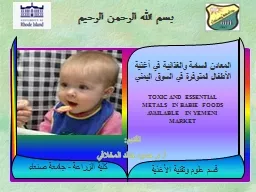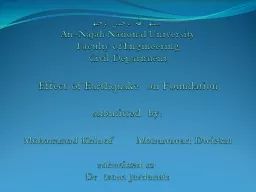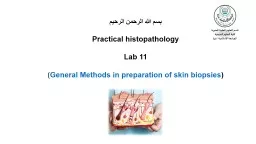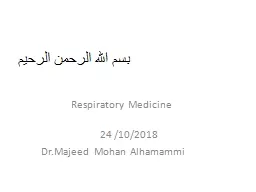PPT-ШЁШіЩ… Ш§Щ„Щ„ЩҮ Ш§Щ„ШұШӯЩ…ЩҶ Ш§Щ„ШұШӯЩҠЩ…
Author : broadcastworld | Published Date : 2020-06-17
ANKYLOGLOSSIA Done by Abdullah Almuttawa Pediatric Surgery Intern 2011 Tuesday September 27 2011 2 Abdullah Almuttawa objectives Introduction Epidemiology Potential
Presentation Embed Code
Download Presentation
Download Presentation The PPT/PDF document "ШЁШіЩ… Ш§Щ„Щ„ЩҮ Ш§Щ„ШұШӯЩ…ЩҶ Ш§Щ„ШұШӯЩҠЩ..." is the property of its rightful owner. Permission is granted to download and print the materials on this website for personal, non-commercial use only, and to display it on your personal computer provided you do not modify the materials and that you retain all copyright notices contained in the materials. By downloading content from our website, you accept the terms of this agreement.
ШЁШіЩ… Ш§Щ„Щ„ЩҮ Ш§Щ„ШұШӯЩ…ЩҶ Ш§Щ„ШұШӯЩҠЩ…: Transcript
Download Rules Of Document
"ШЁШіЩ… Ш§Щ„Щ„ЩҮ Ш§Щ„ШұШӯЩ…ЩҶ Ш§Щ„ШұШӯЩҠЩ…"The content belongs to its owner. You may download and print it for personal use, without modification, and keep all copyright notices. By downloading, you agree to these terms.
Related Documents














